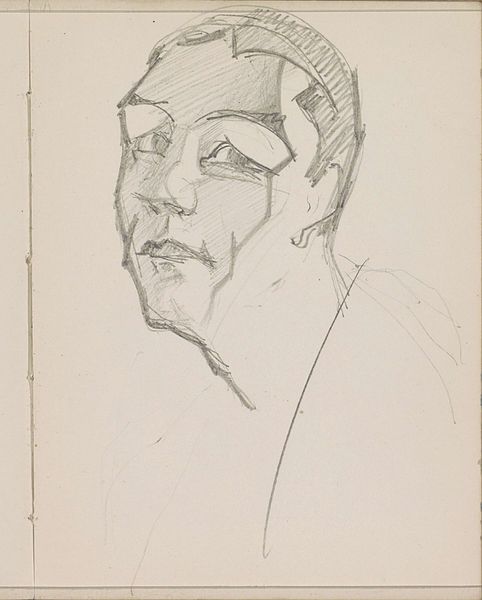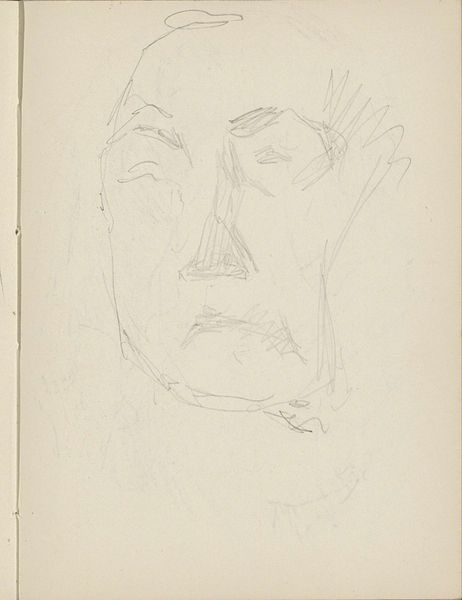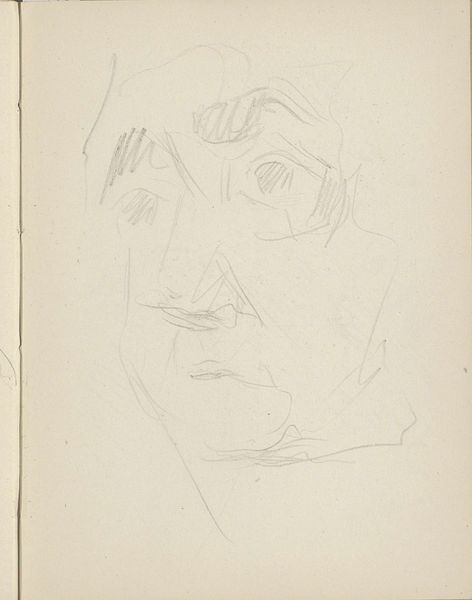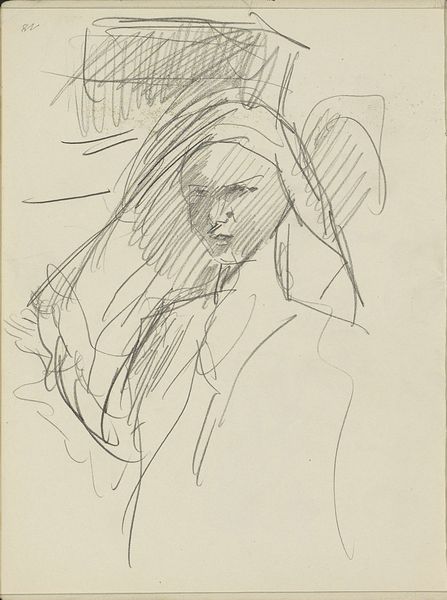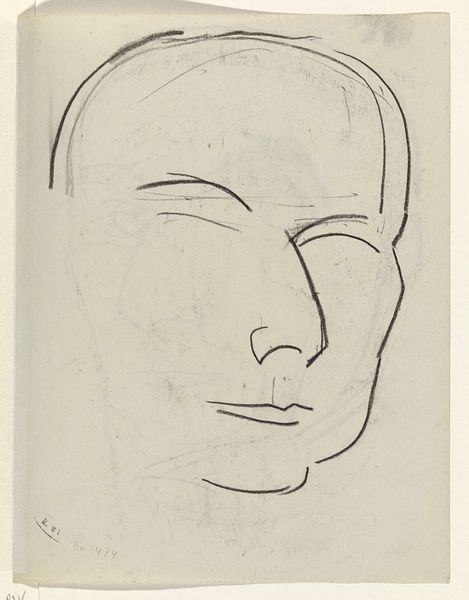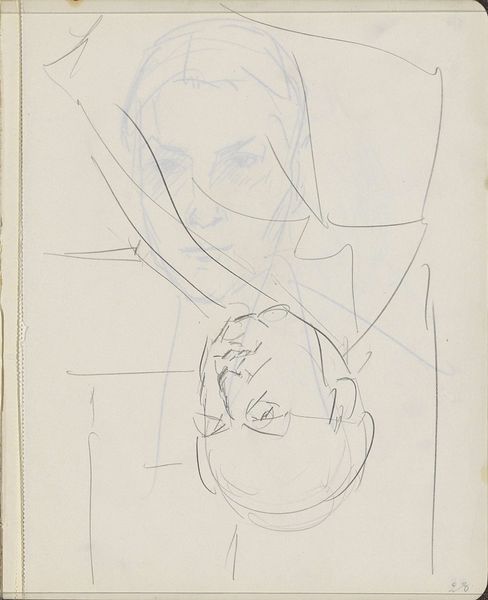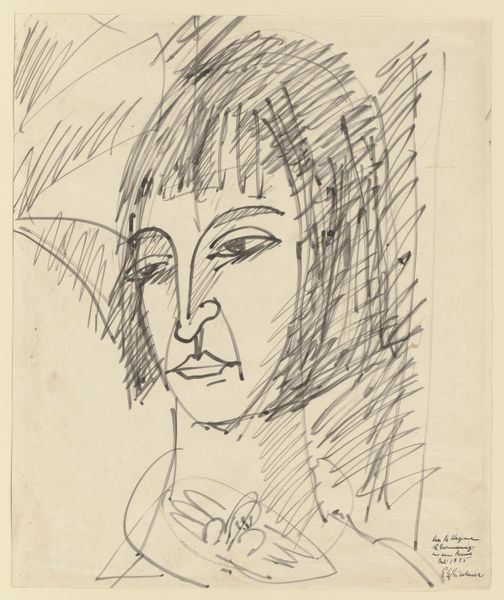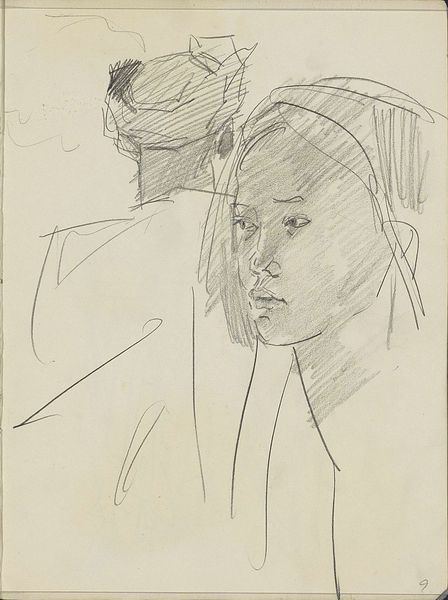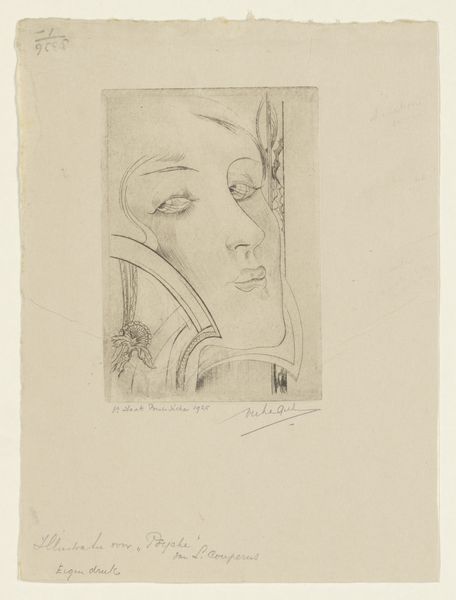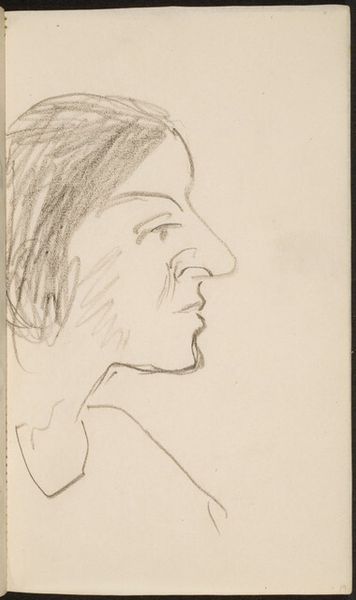
drawing, pencil
#
portrait
#
pencil drawn
#
drawing
#
toned paper
#
light pencil work
#
pencil sketch
#
figuration
#
personal sketchbook
#
ink drawing experimentation
#
pencil
#
sketchbook drawing
#
portrait drawing
#
pencil work
#
sketchbook art
Copyright: Rijks Museum: Open Domain
Curator: We’re standing before an evocative work on paper entitled “Gezicht van een vrouw,” or “Face of a Woman," dating from sometime between 1906 and 1945. Editor: It's a striking sketch, almost spectral. The lightness of the pencil on the toned paper gives it an ethereal, dreamlike quality. A real sense of transience. Curator: Absolutely. Consider how the light pencil work reveals just enough detail to suggest a human presence. There is an emphasis on line and form characteristic of preliminary studies. Do you see how the use of figuration lends itself to exploring internal states? Editor: Definitely, but for me it raises questions about visibility and representation. A woman, viewed—but how much is revealed, and on whose terms? This was a turbulent period in Dutch history. What social or political position did she occupy, given the restrictions placed on women's self-expression at that time? Curator: An important observation. Looking at her expression, one can interpret a mix of vulnerability and resolve, reflecting, perhaps, the psychological complexity that women navigated then. Also, portraiture is symbolic. To me, she embodies themes of resilience. Editor: I can see that reading. I keep returning to the lack of distinct features though. This woman is reduced to a series of lines. Could this ambiguity actually subvert patriarchal expectations by denying viewers the gratification of a clearly defined, idealized image of femininity? Curator: That’s an interesting lens to use in the discussion of portraits. What is seen as a sketch to one may be deconstruction for someone else. We both seem to think it challenges something that should not go unaddressed. Editor: It makes me think about who has historically had the privilege to be seen, to be fully represented, and how artistic choices can either reinforce or challenge those power structures. There is also a psychological openness achieved with a gestural drawing. It creates emotional authenticity in this portrait and suggests new ways to view feminine imagery and narratives. Curator: Looking at the face as we reflect, the symbol, emotion, history, and the many potential narratives, I think it offers a glimpse into her internal world and, on a broader scale, of early to mid 20th century ideals, through the intimate act of looking and of interpreting symbolism. Editor: Precisely, and thinking about its place in a collection like the Rijksmuseum, it reminds us that art, even in its unfinished form, can provoke dialogue about identity, representation, and social realities across time.
Comments
No comments
Be the first to comment and join the conversation on the ultimate creative platform.
